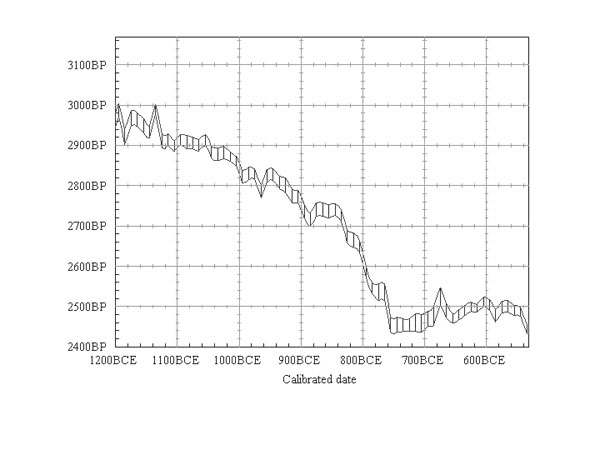Image Details

Courtesy Thomas Higham
This calibration curve shows the correlation of radiocarbon years (vertical axis) with calendar years (horizontal axis). Carbon-14 testing gives an artifact’s “radiocarbon years before present” (BP) and is based on the known rate of decay of carbon atoms. Matching radiocarbon years to calendar years requires finding the BP date of artifacts whose precise age is known. Scientists use preserved, ancient wood, since they can determine a tree’s exact age by studying tree rings. From these they have determined, for example, that a tree that dates to 1100 B.C.E. has a radiocarbon date of roughly 2900 BP. Objects with a radiocarbon date of 2900 BP therefore date to 1100 B.C.E.
Why is a calibration adjustment needed if carbon decays at a steady rate? Because the amount of carbon in the atmosphere varies in different periods and even by area, thereby altering the amount of carbon that an organism has before it dies and carbon decay commences. Radiocarbon calibration curves also vary slightly, so the result may differ depending on which calibration curve is used.
